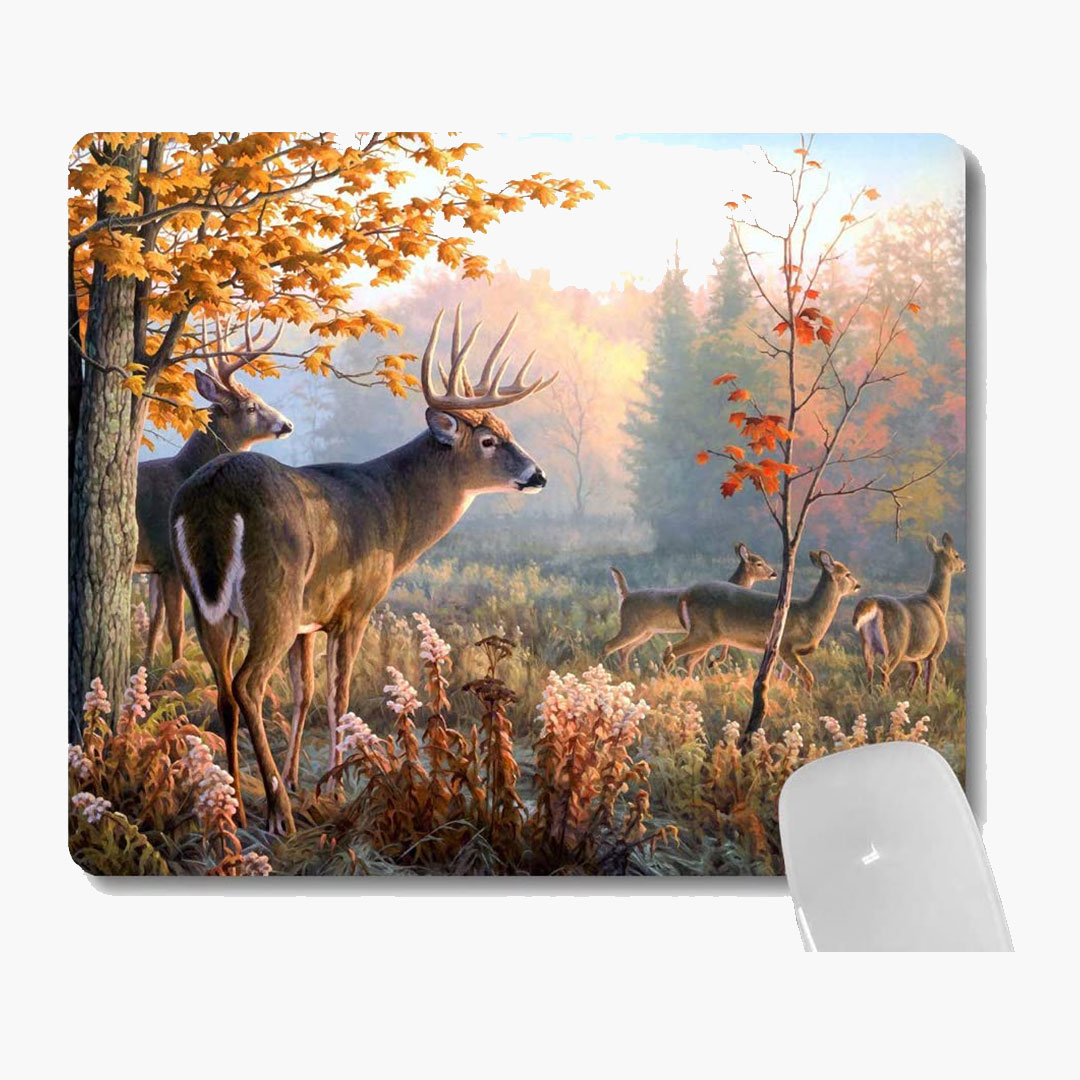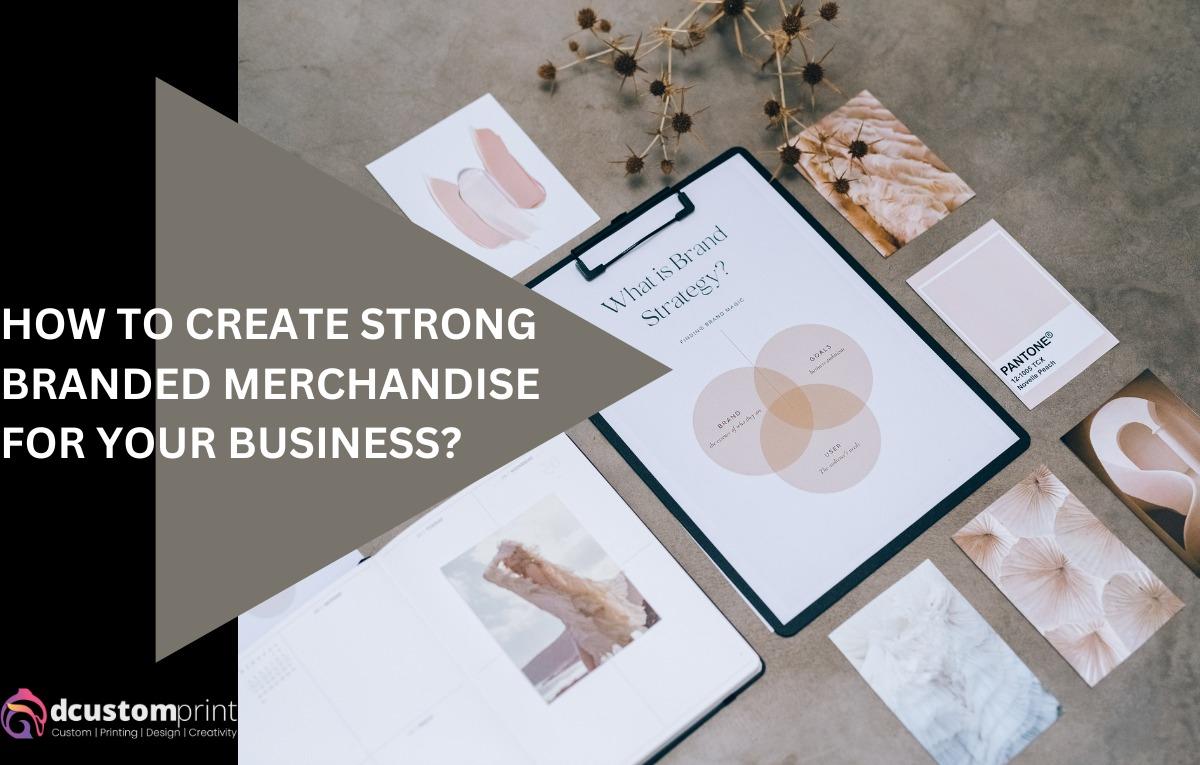How To Create To Strong-Branded Merchandise For Your Business?
Branded merchandise, also known as promotional products, are items that have a company’s logo or branding on them. These items are often giveaways as gifts or sold to customers to promote the company and increase brand recognition. It can take many forms, from office supplies to technological accessories and food and drink products.
It is an effective marketing tool for many reasons. First, it is a tangible way to connect with customers and promote a company’s brand identity. When customers use or wear a brand, they become walking advertisements for the company, which can help increase brand awareness and attract new customers. It can also foster a sense of loyalty among customers, as they feel connected to the brand through the merchandise they own.
Another benefit of branded merchandise is its versatility. It can be used for various purposes, including as a reward for loyal customers and as a giveaway at events. A way to incentivize purchases or increase brand awareness.
Creating effective branded merchandise requires careful planning and execution. Businesses must consider factors such as the type of merchandise they want to create, the design and branding elements they wish to incorporate, and how they will distribute and promote the merchandise. Businesses must also ensure that their merchandise is high-quality and reflects their brand identity.
WHO NEEDS BRANDED MERCHANDISE?
It can benefit many individuals and organizations, from small businesses to large corporations, non-profit organizations, and even individuals looking to promote their brand.
Here are some examples of who might benefit from using branded merchandise:
SMALL BUSINESSES:
Small businesses can use branded merchandise cost-effectively to increase brand awareness and stand out from competitors. Branded merchandise can help small businesses create a professional image and build customer loyalty, which can be essential for long-term success.
LARGE CORPORATION:
Large corporations often use branded merchandise to promote their brand identity and connect with customers. Branded merchandise can help large corporations create a solid and recognizable brand image, which can be essential in highly competitive industries.
NON-PROFIT ORGANIZATION:
Non-profit organizations can use branded merchandise to promote their mission and raise awareness for their cause. Branded merchandise can be used to thank donors and volunteers and generate revenue through sales.
EVENT PLANNERS:
Event planners can use branded merchandise to create an Unforgettable experience for Participants. Branded merchandise can be given as a welcome gift used as a part of an extensive promotional campaign, such as social media contests or Competition.
INDIVIDUALS:
Individuals looking to promote their brand can use branded merchandise to increase their visibility and reach. Branded merchandise can help individuals create professional images and build a following on social media.
Branded merchandise can offer several benefits to a business, including increased brand awareness, cost-effective marketing, customer loyalty, increased revenue, differentiation from competitors, and customer engagement. By creating high-quality and engaging branded merchandise, businesses can make tangible connections with their customers and promote their brand in a fun and effective way.
WHY DOES YOUR BUSINESS NEED BRANDED MERCHANDISE?
Branded merchandise can offer several benefits to a business:
Businesses need branded merchandise as it can help to increase brand awareness and recognition. When customers wear or use branded merchandise, they become a walking advertisement for your business. It can also be a cost-effective marketing tool for a tiny business. Unlike traditional marketing methods, such as print or television ads, branded merchandise has a longer lifespan and is seen by a wider audience, making it a more cost-effective option. It helps to build customer loyalty and trust. By giving away or selling high-quality merchandise with your brand on it, you provide customers with a tangible reminder of your business and create a positive association with your brand. It generates revenue for your business. By selling branded merchandise, you can make a new revenue stream and diversify your income sources.
It can also offer several benefits to a business, including differentiating it from competitors. By creating unique and creative merchandise that accurately reflects your brand identity, you can set yourself apart from competitors and build a strong brand image. It can also make a tangible connection to engage customers and create a more personalized experience. You can build a deeper relationship with your customers and brand loyalty by offering customized or personalized merchandise.
CREATE A STRONG BRANDED MERCHANDISE FOR YOUR BUSINESS:
Here are the following five steps to building strong branded merchandise:
TARGET AUDIENCE:
The target audience is a crucial factor to consider when creating strong branded merchandise:
- Understanding the target audience can help businesses create a custom design that resonates with their customers. If the target audience is young and hip, companies can create designs that appeal to that demographic, such as using bright colors to trendy fonts. It allows businesses to develop merchandise specific to their target audience’s needs and interests.
- The target audience can also help businesses determine the quality and durability of the merchandise. If the target audience is looking for high-quality products, companies can invest in higher-end materials to create an inventory that meets those expectations.
- The target audience can also help businesses determine the best distribution channels for their merchandise. If the target audience is primarily online shoppers, companies may want to focus on selling merchandise through their e-commerce website rather than physical stores.
- It helps businesses determine the best branding and messaging for their merchandise. If the target audience is environmentally conscious, companies should highlight their eco-friendly practices or use sustainable materials in their inventory.
- Understanding the target audience can also help businesses create effective marketing strategies for their branded merchandise. If the target audience is active on social media, companies may want to create a social media campaign to promote their merchandise.
BRAND MESSAGE:
Considering a brand message is an essential factor when creating strong branded merchandise.
- Strong branded merchandise should be consistent with the brand’s overall message and image. Businesses can create merchandise that accurately represents their brand identity, values, and mission by considering the brand message. This consistency helps to reinforce the brand message and create a strong connection with customers.
- The brand message can also help businesses create easily recognizable merchandise associated with their brand. By incorporating brand colors, logos, and other visual elements into the inventory, companies can create a stronger association between the merchandise and their brand.
- It helps businesses differentiate their merchandise from competitors. By creating a unique and creative inventory that accurately reflects the brand message, companies can set themselves apart from competitors and build a stronger brand image.
- Considering the brand message can also help businesses build customer loyalty by creating merchandise that aligns with the brand message and values to create deeper connections with customers to promote brand loyalty.
- Also, it can be used to create effective marketing strategies for branded merchandise. By highlighting the brand message and values in marketing campaigns, businesses can attract customers who share similar values and create a stronger brand image.
STRONG PLAN:
Having a strong plan is essential for creating strong branded merchandise:
- A strong plan helps to clarify the goals and objectives of the branded merchandise campaign. It ensures that all stakeholders are on the same page and understand what needs to be achieved. This clarity helps to create a more focused and effective merchandise campaign.
- A strong plan helps to budget the resources needed for the branded merchandise campaign. By knowing the budget, businesses can make better decisions about the types of merchandise to produce, the materials to use, and the distribution channels to focus on.
- It helps to establish timelines for the various stages of the merchandise campaign. By knowing the timeline, businesses can allocate resources more effectively and ensure that the merchandise is ready for critical events or promotional campaigns.
- It helps ensure all stakeholders are involved in the branded merchandise campaign. By involving stakeholders from different departments, businesses can ensure that the merchandise campaign is aligned with the overall marketing strategy and that all objectives are met.
- It also establishes metrics for measuring the success of the branded merchandise campaign. Businesses can measure the campaign’s success more accurately by considering the metrics and adjusting as needed.
GET INSPIRATION:
Getting inspiration for creating strong branded merchandise can come from a variety of sources:
- Your brand identity can be a great source of inspiration for creating branded merchandise. Consider the visual elements of your brand, such as logos, colors, and fonts, and how you can incorporate them into merchandise design.
- Consider the interest, values, and preferences of your target audience. What types of merchandise would they be interested in? What designs or messages would resonate with them?
- Moreover, look to your industry for inspiration. What types of merchandise are popular among your competitors or similar businesses? What design elements or messaging do they use?
- Keep up with current trends in fashion, pop culture, and design. Incorporating popular trends into your merchandise designs can attract attention and create buzz.
- Ask your customers for feedback on your current branded merchandise or what merchandise they want to see from your brand. Their input can provide valuable insights and inspiration for new merchandise designs.
- Consider collaborating with other brands or artists to create unique and exciting merchandise designs. These collaborations can provide fresh perspectives and new design ideas.
- Consider incorporating elements of your company culture into your merchandise designs. This includes inside jokes or references to company values or mission statements.
SELECT THE RIGHT MERCHANDISE:
After considering the abovementioned factors, you can follow these steps to finally select the proper merchandise for your business.:
- Create a shortlist of merchandise options that align with your brand, target audience, budget, and practicality.
- Review your shortlist and compare the pros and cons of each option. Consider factors such as quality, pricing, and turnaround time.
- Request samples of the merchandise options you are considering. This will allow you to see and feel the quality of products before making a final decision.
- Share the samples with your target audience and ask for feedback. This feedback will help. You make more informed decisions. Make a final decision on the merchandise options that best align with your brand and target audience.
- Once you have decided, place your order with a vendor or supplier. Confirm the pricing, quantity, and delivery timeline before placing your order.
- Once you have received your merchandise, promote it to your target audience through your website, social media, email marketing, and other channels. Encourage your customers to share photos of themselves using your merchandise and tag your brand on social media.
Creating strong branded merchandise for your business requires careful planning, consideration of your target audience, and alignment with your brand message. Understanding brand identity, prioritizing practicality and usefulness, and choosing merchandise that resonates with your target audience are essential. By following the steps outlined above, including getting inspiration, selecting the proper inventory, and promoting your products, you can create strong branded merchandise that promotes your brand and provides value to your customers. Branded merchandise should showcase your brand and offer a memorable experience for your customers, making them feel like a part of your brand community.
FAQ (Frequently Asked Questions):
- Why is branded merchandise important for your business?
- It can increase brand recognition and loyalty among your customers.
Additionally, it provides a tangible representation of your brand and can act as a form of advertising, as your customers publicly use or wear your brand. - How to choose the proper merchandise for your business?
- Consider your brand identity, target audience, budget, practicality, and occasion when choosing merchandise for your business. Create a shortlist of options, request samples, and get feedback from your target audience before making a final decision.
- How to ensure the quality of branded merchandise?
- Research vendors and suppliers, request samples, and read reviews to ensure the quality of your brand. Confirming pricing, quantity, and delivery timeline before placing your order is essential.
- How to promote branded merchandise?
- Moreover, promote the brand through a website, social media, email marketing, and other channels. Encourage your customers to share photos of themselves using your inventory and tag your brand on social media to increase visibility and engagement.
Keep Reading
- 8 Ways To Market Your Print Shop’s Brand With Custom Merchandise
- Print-On-Demand Trends 2023: Best Products & Design Ideas To Sell



